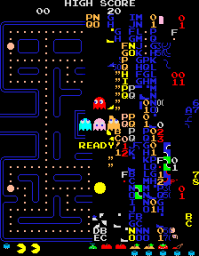Difference between revisions of "Kill screen"
| Line 7: | Line 7: | ||
When kill screens began to be encountered in the early 1980s, developers began introducing code to prevent them from occurring. One method was to introduce a [[planned game over]], which purposely ends a game when the player reaches a certain point, usually a very high score or level. Other popular ways of doing this is to simply stop counting a number when it gets too high, or safely loop it back to zero. | When kill screens began to be encountered in the early 1980s, developers began introducing code to prevent them from occurring. One method was to introduce a [[planned game over]], which purposely ends a game when the player reaches a certain point, usually a very high score or level. Other popular ways of doing this is to simply stop counting a number when it gets too high, or safely loop it back to zero. | ||
| − | A kill screen must either crash the game | + | A kill screen must either crash the game or create a similar form of unexpected ending to the game. If the player merely becomes stuck due to a bug or oversight, it's called a [[soft lock]]. An unavoidable soft lock can be viewed as a form of kill screen. |
The video game hacker community has created patches to fix the kill screens for the more popular video games. Kill screens have also taken on new life in modern games both as parody and fan service. | The video game hacker community has created patches to fix the kill screens for the more popular video games. Kill screens have also taken on new life in modern games both as parody and fan service. | ||
Revision as of 16:46, 30 June 2022

A kill screen is a video game term which describes a point in a game where an unexpected game over is guaranteed due to a programming oversight. Kill screens usually don't occur until after a player has progressed further than the developers assumed a person ever would. The term "kill screen" usually applies to older video games that didn't have a programmed ending and play was expected to be able to continue forever.
Kill screens in early video games are typically caused by a memory overflow. A byte in the game's memory is capable of holding a value from 0 to 255. A variable of the game, like the stage number, may be stored in this memory. It usually starts at 1 and increments as the player progresses through the game. If the player finishes stage 255, the game's code will try to add 1 to it, but the hardware cannot store 256, so it instead loops the value back around to 0. This may cause unexpected results if the developers didn't expect the variable to ever equal 0.
When kill screens began to be encountered in the early 1980s, developers began introducing code to prevent them from occurring. One method was to introduce a planned game over, which purposely ends a game when the player reaches a certain point, usually a very high score or level. Other popular ways of doing this is to simply stop counting a number when it gets too high, or safely loop it back to zero.
A kill screen must either crash the game or create a similar form of unexpected ending to the game. If the player merely becomes stuck due to a bug or oversight, it's called a soft lock. An unavoidable soft lock can be viewed as a form of kill screen.
The video game hacker community has created patches to fix the kill screens for the more popular video games. Kill screens have also taken on new life in modern games both as parody and fan service.
Examples
Here are some of the more notable examples.
| Title | Platform | Description |
|---|---|---|
| Dig Dug | Arcade | Appears on stage 256. An overflow results in an enemy being spawned on top your character killing him the instant the stage begins. |
| Donkey Kong | Arcade | Appears on stage 22. An overflow in the bonus time occurs which results in giving the player only four seconds to reach Donkey Kong, which isn't possible. |
| Donkey Kong Jr. | Arcade | Appears on stage 22. A similar bug with the original where an overflow with the time results in not enough time to win. |
| Galaga | Arcade | Appears on stage 256. An overflow displays "stage 0" and the outcome changes depending on difficulty setting. Easy: reboots game, medium: challenge stage 2, but ships shoot, finishing it returns to stage 1, hard: locks the game. |
| Jr. Pac-Man | Arcade | Appears on stage 146. An overflow causes the display to become corrupt. All of the walls of the maze are gone, and many pellets are missing so you can't progress. |
| Ms. Pac-Man | Arcade | Appears in stage 142. The game reboots. However, various glitches start to become apparent on level 131. |
| Pac-Man | Arcade | Appears on stage 256. The accumulated sprites of the bonus item displayed on the bottom of the screen overflow into the maze memory corrupting it and preventing the player from eating the necessary number of pellets to trigger the end of level. |
Links
- donhodges.com - The machine code behind kill screens and how to fix them.

